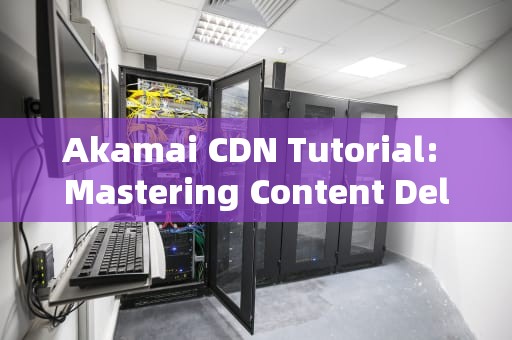In today's digital age, the need for fast and reliable content delivery is paramount. As businesses expand globally, ensuring that web applications, media files, and other digital assets reach users quickly and efficiently has become a critical priority. One of the most renowned solutions in this domain is Akamai CDN (Content Delivery Network). This tutorial will guide you through the essentials of Akamai CDN, from its basic concepts to practical implementation steps.

Understanding Akamai CDN
What is a CDN?
A Content Delivery Network (CDN) is a distributed system of servers strategically placed around the world. These servers store cached versions of your content, which can be delivered to users based on their geographic location. By doing so, a CDN reduces latency, speeds up load times, and enhances the overall user experience.
What is Akamai?
Akamai Technologies, Inc. is a leading global CDN service provider. Founded in 1998, it has grown to become one of the largest CDN networks in the world. Akamai's infrastructure spans over 150,000 servers across more than 130 countries, making it a powerful tool for delivering content at lightning-fast speeds.
Why Use Akamai CDN?
1、Speed and Performance: With data centers located worldwide, Akamai ensures that your content is delivered from the closest possible location to your end-users, reducing latency and improving load times.
2、Scalability: Akamai handles massive traffic spikes effortlessly, making it ideal for websites experiencing high volumes of traffic or those anticipating rapid growth.
3、Security: Akamai offers robust security features, including DDoS protection, Web Application Firewall (WAF), and SSL/TLS encryption, safeguarding your content from cyber threats.
4、Reliability: The extensive network minimizes downtime and ensures high availability, even during peak usage periods.
5、Analytics and Insights: Akamai provides comprehensive analytics and reporting tools, allowing you to monitor performance, troubleshoot issues, and make informed decisions.
Getting Started with Akamai CDN
Step 1: Sign Up and Account Setup
To begin using Akamai CDN, you'll first need to create an account. Visit the Akamai website and sign up for an account. You may need to provide some basic information and contact details. Once your account is created, you can proceed to the next steps.
Step 2: Adding a Domain
After logging into your Akamai account, navigate to the "NetStorage" section. Here, you can add your domain by specifying the origin server URL and configuring the necessary settings. Ensure that your DNS is properly configured to point to Akamai's servers.
Step 3: Configuring Edge Configurations
Edge configurations allow you to fine-tune how your content is delivered. In the Akamai Control Center, you can set various parameters such as caching rules, compression settings, and SSL configurations. These configurations are crucial for optimizing performance and security.
Step 4: Deploying Your Content
Once your domain and edge configurations are set up, you can start deploying your content. This involves uploading your files to Akamai's NetStorage platform. You can use Akamai's command-line interface (CLI) tools or integrate with popular content management systems (CMS) and development platforms for seamless deployment.
Step 5: Testing and Validation
Before going live, it's essential to test your setup thoroughly. Use tools like Pingdom or GTmetrix to analyze load times and ensure that your content is being delivered as expected. Additionally, validate that your security settings are correctly applied and that there are no accessibility issues.
Advanced Features and Best Practices
Utilizing Akamai's Media Acceleration Solutions
For media-heavy websites, Akamai offers specialized solutions like Media Acceleration Solutions (MAS). MAS optimizes the delivery of video and audio content, ensuring smooth streaming and high-quality playback. It includes features like adaptive bitrate streaming and dynamic content delivery.
Implementing Security Best Practices
Security is a critical aspect of any CDN solution. Akamai offers several security features that you should leverage:
DDoS Protection: Protect your site from distributed denial-of-service attacks with Akamai's advanced DDoS mitigation capabilities.
Web Application Firewall (WAF): Safeguard your applications from common web exploits and malicious attacks.
SSL/TLS Encryption: Ensure secure data transmission with robust encryption protocols.
Monitoring and Analytics
Regular monitoring and analysis are crucial for maintaining optimal performance. Akamai provides detailed analytics and reporting tools through its Control Center. Key metrics to monitor include:
Latency and Load Times: Track the time taken for content to reach end-users.
Error Rates: Identify and resolve any errors in content delivery.
Traffic Patterns: Analyze user behavior and traffic trends to make data-driven decisions.
Optimizing for SEO
Faster load times directly impact your search engine rankings. By using Akamai CDN, you can significantly improve your site's SEO performance. Ensure that your content is properly indexed and that caching strategies are aligned with your SEO goals.
Troubleshooting Common Issues
Issue 1: Slow Load Times
If you experience slow load times, check the following:
Origin Server Performance: Ensure that your origin server is responsive and not overloaded.
Caching Settings: Review your caching rules to ensure that frequently accessed content is stored closer to end-users.
Network Latency: Analyze network paths and consider adding more edge locations if necessary.
Issue 2: High Error Rates
High error rates can indicate misconfigurations or external factors. To troubleshoot:
Check DNS Settings: Ensure that your DNS is correctly pointing to Akamai's servers.
Validate Edge Configurations: Review and adjust edge settings to match your content delivery requirements.
Monitor Origin Health: Regularly check the health of your origin servers to ensure they are functioning correctly.
Issue 3: Security Breaches
If you suspect a security breach:
Review Logs: Analyze access logs and security reports for unusual activities.
Update WAF Rules: Adjust Web Application Firewall rules to block suspicious traffic.
Consult Akamai Support: Reach out to Akamai's support team for assistance and guidance.
Conclusion
Mastering Akamai CDN can significantly enhance your content delivery strategy, providing faster load times, improved scalability, and enhanced security. By following this tutorial, you should have a solid foundation to get started with Akamai CDN. Remember to continuously monitor and optimize your setup to ensure the best possible performance for your users. Happy delivering!
随着互联网的普及和信息技术的飞速发展台湾vps云服务器邮件,电子邮件已经成为企业和个人日常沟通的重要工具。然而,传统的邮件服务在安全性、稳定性和可扩展性方面存在一定的局限性。为台湾vps云服务器邮件了满足用户对高效、安全、稳定的邮件服务的需求,台湾VPS云服务器邮件服务应运而生。本文将对台湾VPS云服务器邮件服务进行详细介绍,分析其优势和应用案例,并为用户提供如何选择合适的台湾VPS云服务器邮件服务的参考建议。

工作时间:8:00-18:00
电子邮件
1968656499@qq.com
扫码二维码
获取最新动态
